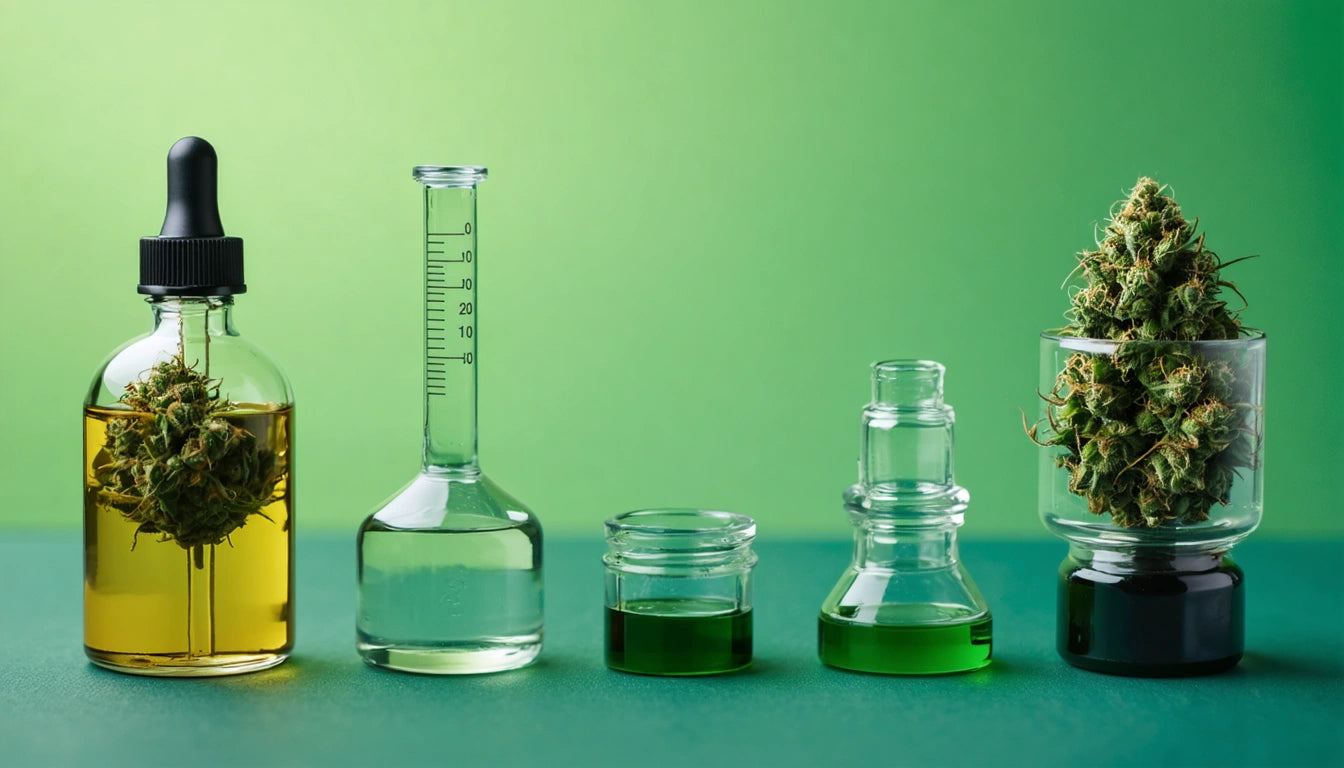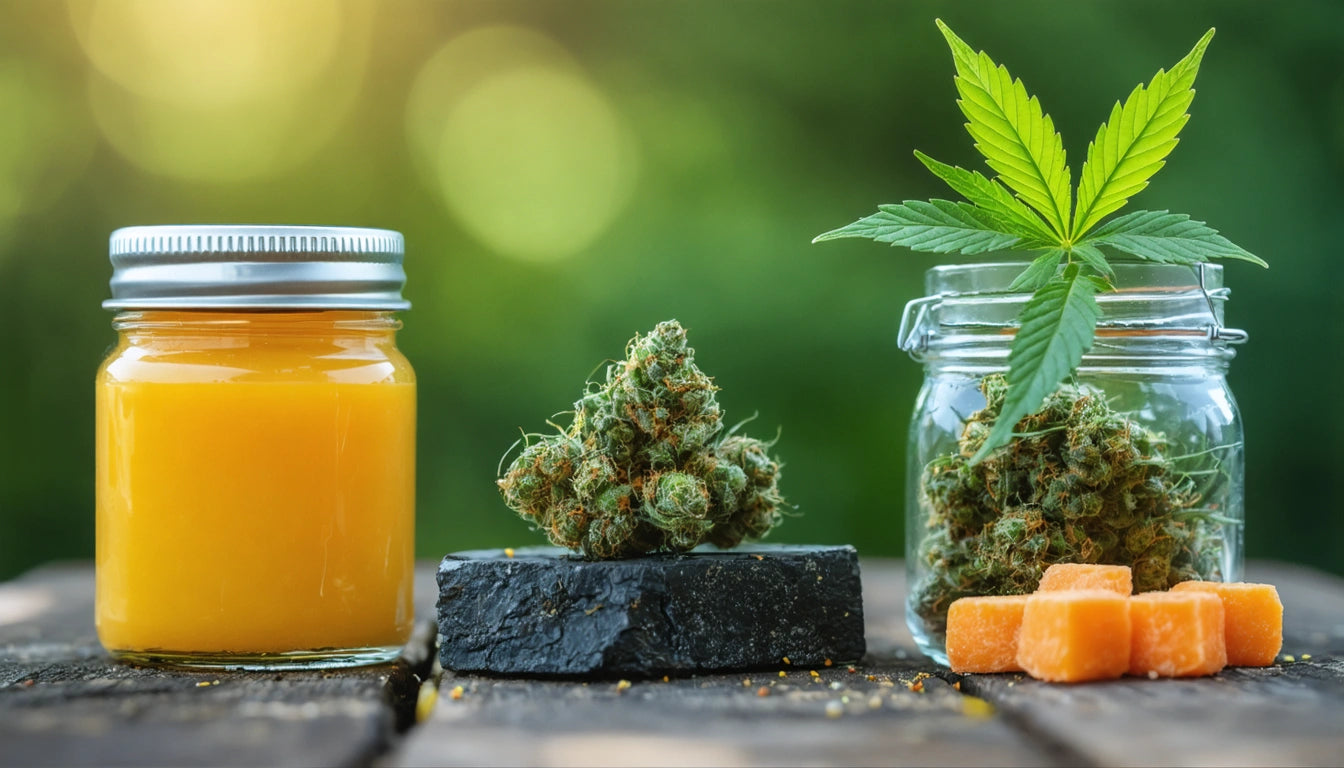Table of Contents
Cannabis concentrates have revolutionized consumption methods, offering potent alternatives to traditional flower. As the market expands, consumers increasingly question whether solvent or solventless extracts provide a safer experience. This comprehensive guide explores both extraction methods, their safety profiles, and considerations for making an informed choice.
Understanding Cannabis Concentrates
Cannabis concentrates are highly potent products created by extracting cannabinoids and terpenes from the plant material. According to industry experts, these extracts can reach THC levels of 60-90%, significantly higher than flower's typical 15-25% range.
The fundamental difference between concentrate types lies in their extraction methods, which fall into two categories:
- Solvent-based extractions: Using chemicals like butane, propane, or ethanol
- Solventless extractions: Using mechanical or physical separation techniques
Solvent-Based Extraction Methods
Hydrocarbon Extraction
Butane Hash Oil (BHO) and Propane Hash Oil (PHO) are created using light hydrocarbons to strip cannabinoids from plant material. This process yields popular concentrates like shatter, wax, and budder, each with distinct consistencies but similar chemical profiles.
CO2 Extraction
Supercritical CO2 extraction uses pressurized carbon dioxide to separate cannabinoids. This method is considered cleaner than hydrocarbon extraction but requires sophisticated equipment and expertise.
Ethanol Extraction
Alcohol-based extraction uses ethanol to dissolve cannabinoids and terpenes. This method is scalable and produces full-spectrum extracts, though it may pull more plant compounds than desired.
Solventless Extraction Techniques
Rosin
Rosin is produced by applying heat and pressure to cannabis material, forcing resinous sap out without chemical solvents. This technique has gained popularity for its simplicity and purity, as outlined in comparative analyses of concentrate types.
Ice Water Hash
Also known as bubble hash, this method uses ice water and agitation to separate trichomes from plant material. The resulting product can be consumed directly or pressed into rosin for additional refinement.
Dry Sift
This technique involves sieving dried cannabis through fine mesh screens to collect trichomes. The process is straightforward but requires patience and quality starting material.
Safety Considerations and Health Impacts
The safety debate often centers on residual solvents in extracts. Professional labs test for these residuals, with strict limits established by state regulations. When properly purged, solvent-based extracts should contain minimal residual chemicals.
Solventless extracts eliminate concerns about chemical residue entirely, making them appealing to health-conscious consumers and medical patients. However, both types require proper storage in appropriate containers with secure, child-resistant closures to maintain safety and potency over time.
For medical users wondering about concentrate safety, specialized resources can provide guidance on selecting appropriate options for therapeutic use.
Potency and Efficacy Comparison
Both extraction methods can produce highly potent products, though solvent-based techniques may achieve higher cannabinoid concentration in some cases. As discussed in comparative analyses, concentrates significantly outperform flower in potency regardless of extraction method.
Efficacy differences often relate to the spectrum of compounds preserved:
- Solvent extractions may target specific compounds depending on the solvent used
- Solventless methods often preserve a wider terpene profile, potentially enhancing therapeutic effects
- Full-spectrum extracts from either method may provide enhanced benefits through the entourage effect
Storage and Shelf Life
Proper storage is crucial for maintaining quality and safety of all concentrates. Expert recommendations suggest keeping products in airtight, light-resistant containers in cool environments.
Regarding degradation, research indicates that both solvent and solventless extracts have similar shelf lives when stored properly, typically 6-12 months before noticeable potency loss occurs.
Making an Informed Choice for Your Needs
The "safer" choice between solvent and solventless extracts depends on several factors:
- Production standards: Lab-tested products from reputable manufacturers minimize risks
- Personal preference: Flavor profiles and consistency vary between methods
- Consumption method: Different extracts work better with specific consumption tools
- Health considerations: Those with respiratory sensitivities may prefer solventless options
- Dosage control: Understanding appropriate serving sizes is essential regardless of extract type
For newcomers to concentrates, starting with solventless options like rosin may provide peace of mind regarding purity, while experienced users might appreciate the variety of textures and effects available across both categories.
Ultimately, safety comes down to quality manufacturing, proper testing, and responsible consumption practices rather than the extraction method alone. By understanding the differences between solvent and solventless extracts, consumers can make choices aligned with their preferences and wellness goals.











Leave a comment
All comments are moderated before being published.
This site is protected by hCaptcha and the hCaptcha Privacy Policy and Terms of Service apply.